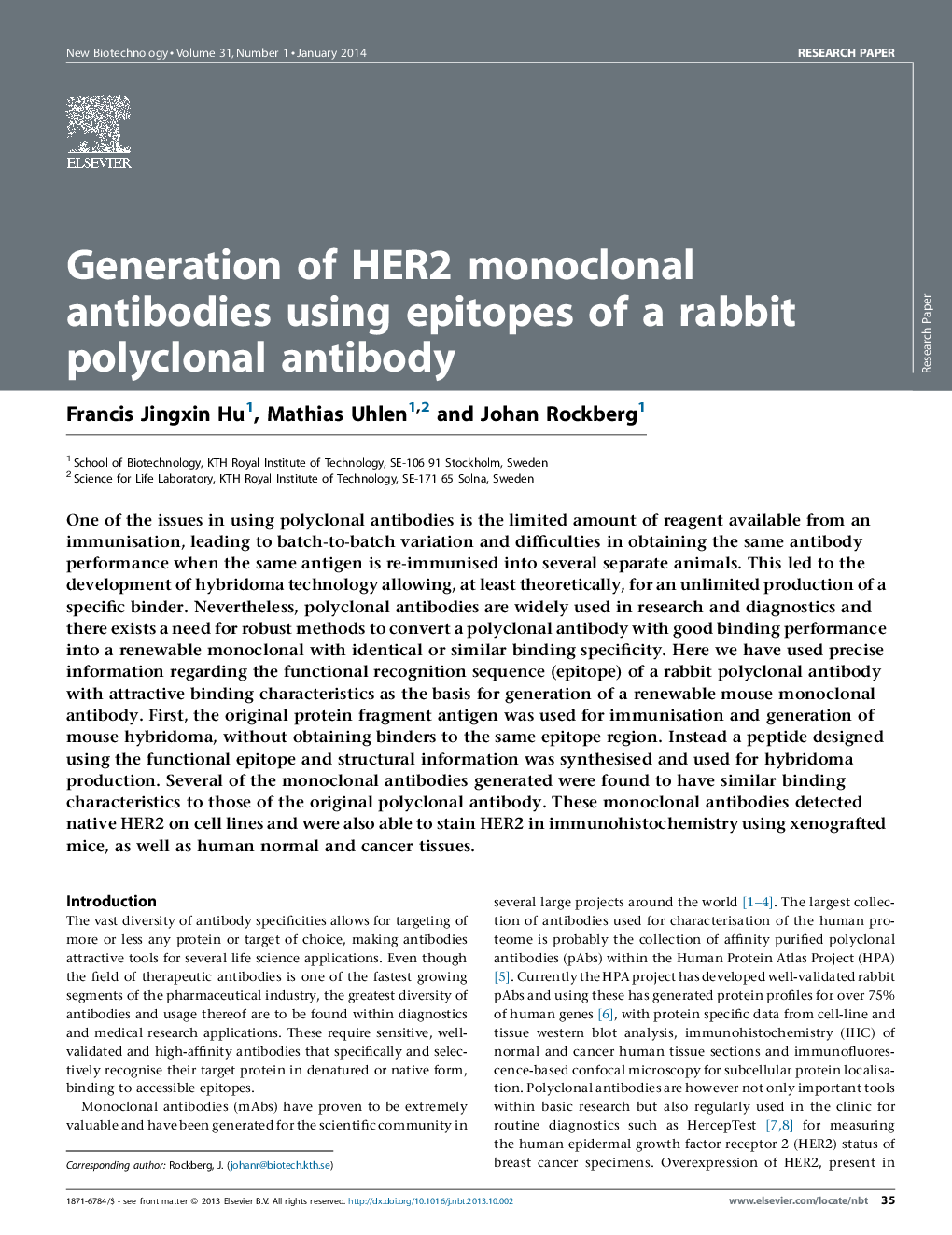| کد مقاله | کد نشریه | سال انتشار | مقاله انگلیسی | نسخه تمام متن |
|---|---|---|---|---|
| 10235046 | 44967 | 2014 | 9 صفحه PDF | دانلود رایگان |
عنوان انگلیسی مقاله ISI
Generation of HER2 monoclonal antibodies using epitopes of a rabbit polyclonal antibody
دانلود مقاله + سفارش ترجمه
دانلود مقاله ISI انگلیسی
رایگان برای ایرانیان
موضوعات مرتبط
مهندسی و علوم پایه
مهندسی شیمی
بیو مهندسی (مهندسی زیستی)
پیش نمایش صفحه اول مقاله

چکیده انگلیسی
One of the issues in using polyclonal antibodies is the limited amount of reagent available from an immunisation, leading to batch-to-batch variation and difficulties in obtaining the same antibody performance when the same antigen is re-immunised into several separate animals. This led to the development of hybridoma technology allowing, at least theoretically, for an unlimited production of a specific binder. Nevertheless, polyclonal antibodies are widely used in research and diagnostics and there exists a need for robust methods to convert a polyclonal antibody with good binding performance into a renewable monoclonal with identical or similar binding specificity. Here we have used precise information regarding the functional recognition sequence (epitope) of a rabbit polyclonal antibody with attractive binding characteristics as the basis for generation of a renewable mouse monoclonal antibody. First, the original protein fragment antigen was used for immunisation and generation of mouse hybridoma, without obtaining binders to the same epitope region. Instead a peptide designed using the functional epitope and structural information was synthesised and used for hybridoma production. Several of the monoclonal antibodies generated were found to have similar binding characteristics to those of the original polyclonal antibody. These monoclonal antibodies detected native HER2 on cell lines and were also able to stain HER2 in immunohistochemistry using xenografted mice, as well as human normal and cancer tissues.
ناشر
Database: Elsevier - ScienceDirect (ساینس دایرکت)
Journal: New Biotechnology - Volume 31, Issue 1, 25 January 2014, Pages 35-43
Journal: New Biotechnology - Volume 31, Issue 1, 25 January 2014, Pages 35-43
نویسندگان
Francis Jingxin Hu, Mathias Uhlen, Johan Rockberg,